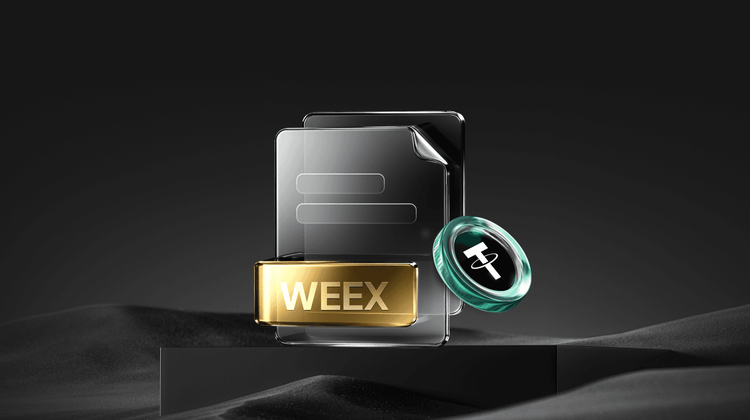L1 and L2 are vying to claim ultra-high TPS. Is the demand really about speed?
Original Article Title: The Great TPS Lie: Crypto's Obsession With Solving Problems Nobody Has
Original Article Author: @therosieum, @tenprotocol Member
Original Article Translation: Diodeep
Editor's Note: The article criticizes the crypto industry's blind pursuit of high TPS (transactions per second), arguing that this race is based on false advertising and overlooks real user needs. Projects, in order to attract funding and attention, exaggerate lab data, sacrificing decentralization, security, and usability to solve often irrelevant problems. The author calls for a focus on genuinely meaningful blockchain applications, building according to actual use case scales, rather than chasing unrealistic digital fantasies.
The following is the original content (reorganized for ease of understanding):
Every week, a new L1 or L2 project goes live, claiming: "We can process 100,000 transactions per second!"
Sometimes it's 50,000 transactions, sometimes it's 1 million.
The exact number doesn't matter because it's all mostly nonsense.
The "Faster Than Thou" Race of Transaction Speed
The scalability war has devolved into crypto's most embarrassing showdown. Every new protocol must claim a higher TPS than the previous one, regardless of whether these speeds are:
· Achievable beyond their AWS testnet (spoiler: it's almost impossible)
· Meaningful for real-world applications
· Necessary for scenarios used by actual humans
This obsession with throughput is like the crypto world taking a Lamborghini for a joyride during rush hour. The problem isn't with the specs but with the context.
Talking About Real Data
Visa, the payment giant that processes transactions for billions of people globally, averages around 1,700 transactions per second. Their theoretical maximum is around 24,000 TPS, but they have never needed this capacity in decades of operation.
Meanwhile, most blockchain projects struggle to attract even 100 daily active users.
If your Discord emojis outnumber your on-chain transactions, you might be solving a problem that exists only in your imagination.
The Hidden Cost of Chasing "Blockchain Scalability Trilemma"
The obsession with theoretical throughput can lead to real-world issues that harm users.
Firstly, there is the disguised centralization: In pursuit of high TPS, decentralization is often sacrificed for the sake of a marketing number.
Secondly, there is security theater: Cutting corners in hasty scaling introduces vulnerabilities that will sooner or later be exploited.
Furthermore, there is engineering talent drain: Top talent is not building what users really need but instead is stuck optimizing synthetic benchmarks.
Lastly, there is blatant deception: Network propaganda's lab numbers crumble under real-world conditions.
The Unsettling Truth
There are two reasons for the obsession with extreme scalability:
· You need to sound tech-savvy to justify your $100M funding
· You desperately want your chain to stand out in a market of over 5000 blockchains
User needs are only an afterthought. The real game is to make retail investors believe you are the ultimate solution—VCs then act as the loudest KOLs for your TPS narrative.

Building Something Truly Meaningful
If you are really building something in this space, here's a reality check:
· Focus on building things only achievable with blockchain
· Design an economic model that doesn't require monthly rug pulls for user acquisition
· Create a user interface that doesn't make regular people want to smash their computers
· Build to the scale of actual use cases, not for the sake of a flashy pitch deck
Scalability Reality Check
Next time a project boasts about handling 500,000 TPS, ask them: "What are these transactions actually doing? Who is generating them? For what purpose?"
When they stutter about "future adoption" and "web3 social," you'll know the answer.
True innovation isn't theoretical performance in a vacuum; it's about building what people truly need and scaling appropriately to demand.
Everything else is just expensive performance art disguised as technology.
You may also like

Cryptocurrency people who use candlestick charts for fortune telling
When fortune telling is depicted on candlestick charts and placed within the context of the cryptocurrency world, its explosive popularity stems not from the accuracy of its mystical claims, but from the fact that traders' collective anxiety about uncertainty has finally found an outlet.

Holiday Season Markets: Understanding Low Liquidity and Trading Conditions
At WEEX, we recognize that the holiday season often brings a different trading experience for many users. As market participation slows, price behavior can feel less predictable and familiar trading rhythms may shift. For traders following AI news today or using AI trading tools, this period often highlights how market structure can influence model performance and short-term signals. Approaching these periods with clear expectations and a disciplined mindset can help traders better navigate seasonal market conditions.

Lido DAO’s Increased Development and Market Dynamics Elevate LDO Price
Key Takeaways Lido DAO’s development activities have surged by 690%, signifying substantial growth. The Lido DAO token (LDO)…

Hyperliquid Whales Shift Strategies: BTC Longs Decline, ETH Shorts Dominate
Key Takeaways A significant reduction in Bitcoin long positions has been observed on Hyperliquid, with large holders decreasing…

Token VS Equity: The Aave Controversy

December 26th Market Key Intelligence, How Much Did You Miss?

Crypto Christmas Heist: Over $6 Million Lost, Trust Wallet Chrome Extension Wallet Hacked Analysis

Trust Wallet Browser Extension Security Incident Leads to Losses
Key Takeaways Trust Wallet identified a significant security breach in its browser extension version 2.68. Approximately over $6…

Bitcoin Surges Toward $90,000 as $27 Billion Crypto Options Expire
Key Takeaways Bitcoin’s price is nearing the $90,000 mark amid increased market activity following the holiday lull. The…

Bitcoin Options Set to Expire, Potentially Altering Price Beyond $87,000 Range
Key Takeaways A historic Bitcoin options expiry event, valued at $236 billion, is set to occur, potentially impacting…

Ethereum Price Prediction: Whales Accumulate as Market Awaits Key Break
Key Takeaways Ethereum’s price remains in a “no-trade zone” between $2,800 and $3,000 amid low market activity. Whale…

Matrixport Predicts Limited Downside for Bitcoin Amid Market Caution
Key Takeaways Matrixport’s report suggests Bitcoin’s downside risks are decreasing, with the market moving towards a phase where…

Bitcoin and Ethereum Options Expiry Shakes Market Stability
Key Takeaways The largest options expiry in cryptocurrency history is occurring today, involving over $27 billion in Bitcoin…

Trust Wallet Hack Results in $3.5 Million Loss for Major Wallet Holder
Key Takeaways A significant Trust Wallet hack led to the theft of $3.5 million from an inactive wallet.…

PancakeSwap Launches LP Rewards on Base Network
Key Takeaways PancakeSwap has introduced liquidity provider (LP) rewards for 12 v3 pools on the Base network, facilitated…

BDXN Wallets Deposit $400,000 in Tokens to Multiple Exchanges
Key Takeaways BDXN project wallets have transferred approximately $400,000 worth of tokens to various exchanges. The transfers involve…

Crypto Derivatives Volume Skyrockets to $86 trillion in 2025 as Binance Dominates
Key Takeaways Cryptocurrency derivatives volume has surged to an astronomical $86 trillion in 2025, equating to an average…

Ethereum in 2026: Glamsterdam and Hegota Forks, Layer 1 Scaling, and More
Key Takeaways Ethereum is poised for crucial developments in 2026, particularly with the Glamsterdam and Hegota forks. Glamsterdam…
Cryptocurrency people who use candlestick charts for fortune telling
When fortune telling is depicted on candlestick charts and placed within the context of the cryptocurrency world, its explosive popularity stems not from the accuracy of its mystical claims, but from the fact that traders' collective anxiety about uncertainty has finally found an outlet.
Holiday Season Markets: Understanding Low Liquidity and Trading Conditions
At WEEX, we recognize that the holiday season often brings a different trading experience for many users. As market participation slows, price behavior can feel less predictable and familiar trading rhythms may shift. For traders following AI news today or using AI trading tools, this period often highlights how market structure can influence model performance and short-term signals. Approaching these periods with clear expectations and a disciplined mindset can help traders better navigate seasonal market conditions.
Lido DAO’s Increased Development and Market Dynamics Elevate LDO Price
Key Takeaways Lido DAO’s development activities have surged by 690%, signifying substantial growth. The Lido DAO token (LDO)…
Hyperliquid Whales Shift Strategies: BTC Longs Decline, ETH Shorts Dominate
Key Takeaways A significant reduction in Bitcoin long positions has been observed on Hyperliquid, with large holders decreasing…
Token VS Equity: The Aave Controversy
December 26th Market Key Intelligence, How Much Did You Miss?
Popular coins
Latest Crypto News
Customer Support:@weikecs
Business Cooperation:@weikecs
Quant Trading & MM:[email protected]
VIP Services:[email protected]
